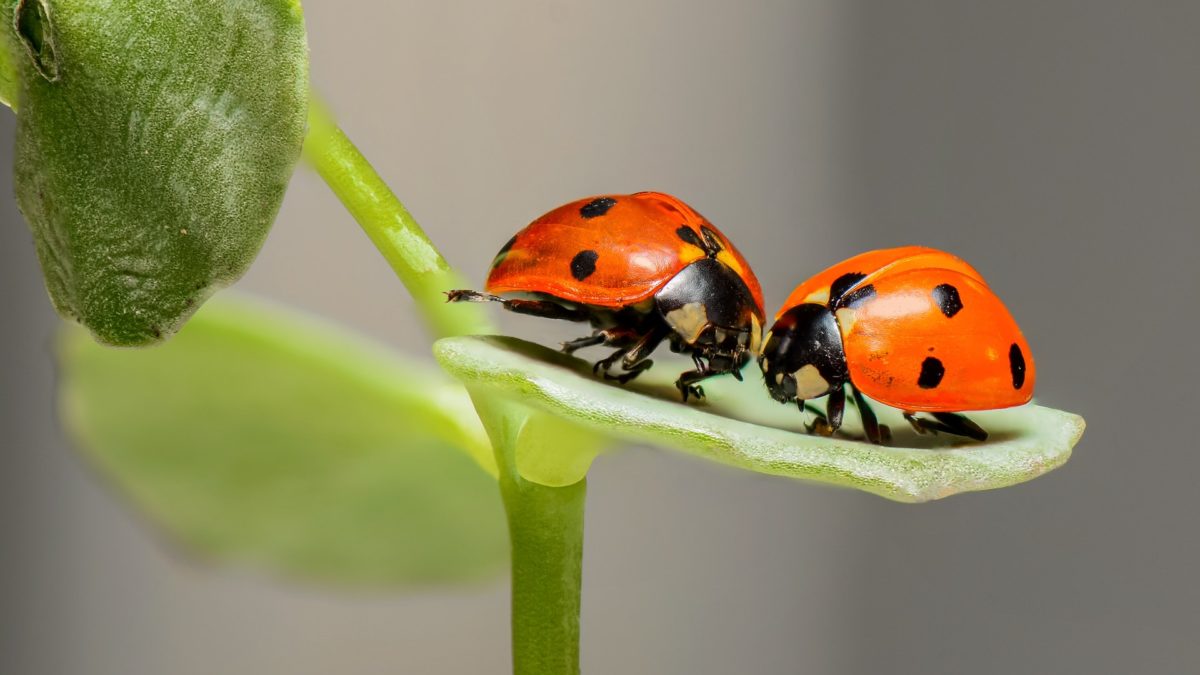Making an insect hotel is a fantastic weekend activity to try with your children and these simple instructions will help you build one.
Encouraging insects, reptiles, frogs, birds and animals into our garden—be it in a suburban or rural setting—isn’t just for our own enjoyment. It can serve as a direct contribution to the health and sustainability of our local environment and wildlife. Insect hotels can provide a permanent or seasonal safe refuge or nesting site for a variety of creatures such as spiders, solitary bees and wasps.
It’s also a wonderful opportunity to teach your children about the environment.
When it comes to building one, you’re only limited by your imagination. It can be a lot of fun to get out with your children to collect all the bits and pieces—a visit to your local “recycling and recovery centre” (that is, the tip) is in order! The only construction “rule” is that air must not be able to pass directly through the hotel (nobody likes a draught)!
Materials required to build an insect hotel
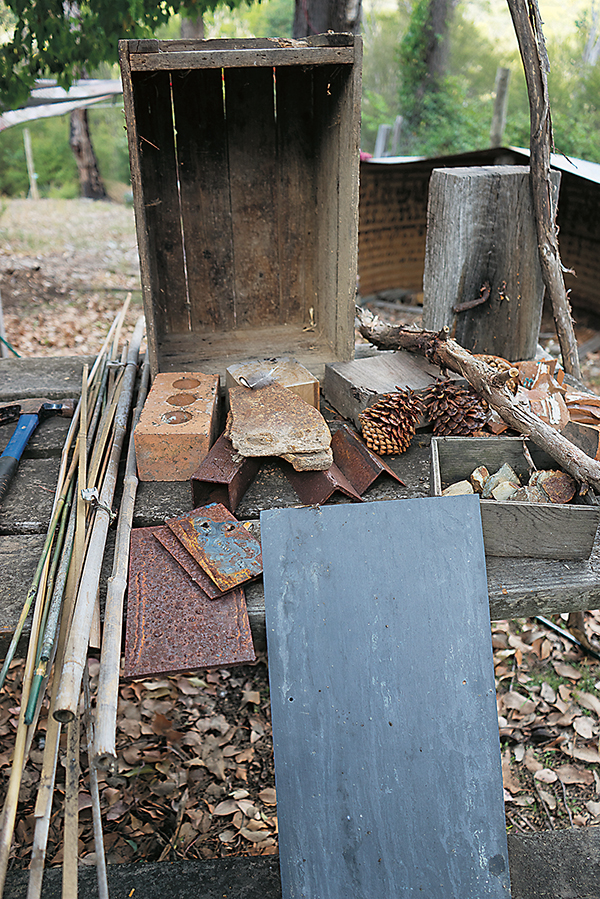
- A timber box or old letterbox for the main frame of the hotel (build your own frame if you’re handy). Ideally the timber should be 2 centimetre-minimum thickness. The box should be of a size that makes it easy for you to move the hotel once it’s filled with various smaller boxes. Note that native bees need a minimum depth of 8 centimetres in which to nest.
- Smaller timber boxes that can be used to contain various natural materials and be placed within the main box (these boxes are not strictly necessary, but they can make building the hotel easier). Look for them in op shops and in the specials sections at garden centres.
- An assortment of natural materials such as timber (offcuts or branches); old bamboo blinds; narrow diameter bamboo canes; large leaves; broken terracotta; holey bricks; twigs; large dried banksia (or other) seed cones; timber slats; bark; large, flat stones; coconut coir; terracotta tiles.
- Thin pieces of timber to act as dividers within the main frame.
- Although not a natural material, a plastic soft-drink bottle with the top cut off makes an excellent waterproof receptacle for holding twigs and bamboo; just be sure to angle it so it doesn’t fill with water.
- If hanging the hotel: twine or wire.
- If elevating the hotel off the ground: bricks or posts.
- Tools: drill and drill bits
Building an insect hotel
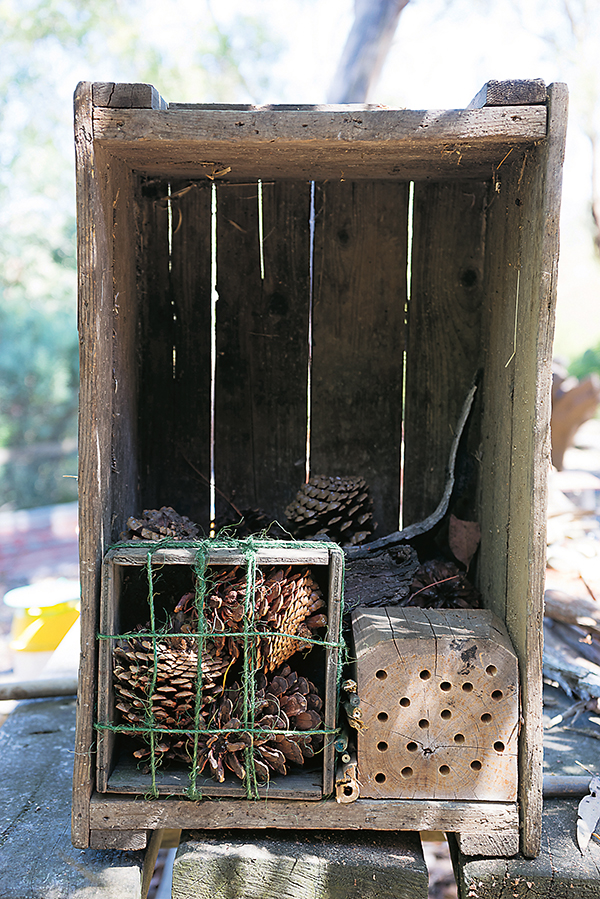
- If making your own box for the main hotel frame, use timber with a minimum thickness of 2 centimetres. Build the box approximately 30 centimetres (W) x 30 centimetres (H) x 15 centimetres (D), although you could essentially make it whatever size you choose.
- Drill various-sized holes in the timber pieces or branches to accommodate native bees. Holes should range between 4 and 9 millimetres wide and be at least 8 centimetres deep.
- Fill the small boxes (if using) with twigs and bamboo cut to size.
- Fill holey bricks with leaves, bark, coir and twigs.
- If using, fill soft-drink bottles with twigs and bamboo.
- Systematically layer your components through the main frame box, using the thinner pieces of timber as dividers where necessary.
- Install pieces of timber vertically.
- Layer bark vertically and horizontally.
- Install pieces of timber overlapping like tiles.
- Install a few layers of large flat stones or broken terracotta.
- Install large seed cones.
- To finish, ensure your hotel has a sloped roof with a wide overlapping lip to stop rain getting in. Depending on the size of your hotel, you can use a roof tile or any flat, rigid waterproof object. I used two pieces of thin slate.
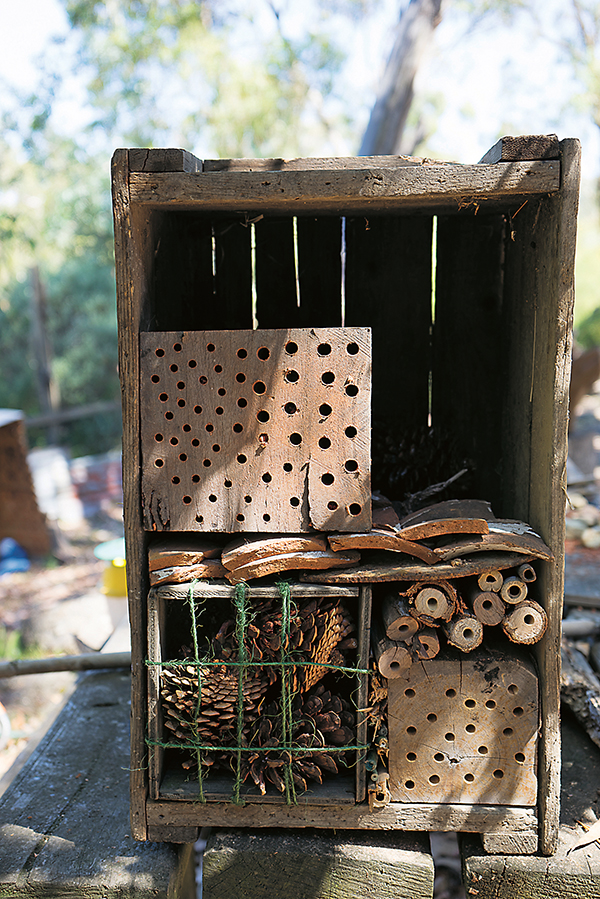
Read: Get the insects into your insect hotel and not on you! Learn how to make a natural insect repellent.
Where to place an insect hotel
Place your insect hotel where it’s not overly exposed to the elements and prevailing winds.
Depending on its weight and size, you could:
- hang it from a tree or attach it to a tree trunk; the tree’s foliage will provide shade
- attach it to the house or shed
- stand it on bricks on the ground in a semishaded position
- attach it to posts in the ground in a semishaded position.
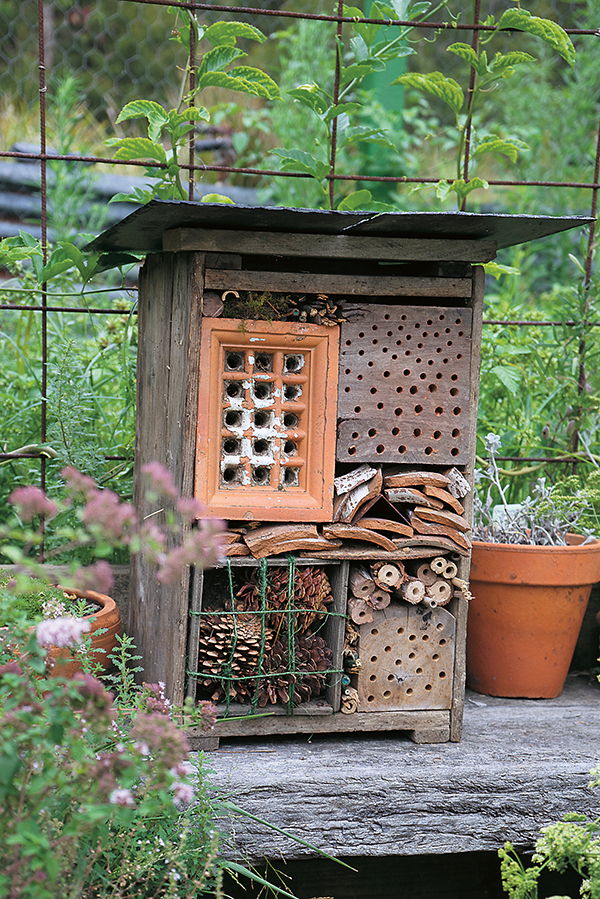
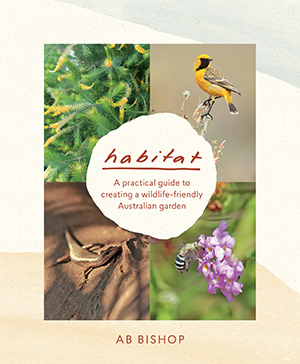
Images and text from Habitat by A.B Bishop, Murdoch Books, RRP $39.99 Photography by A.B Bishop.
How helpful was this article?
Click on a star to rate it!
5 / 5. 1
Be the first to rate this post!
A B Bishop
Related posts
Subscribe
Receive personalised articles from experts and wellness inspiration weekly!

